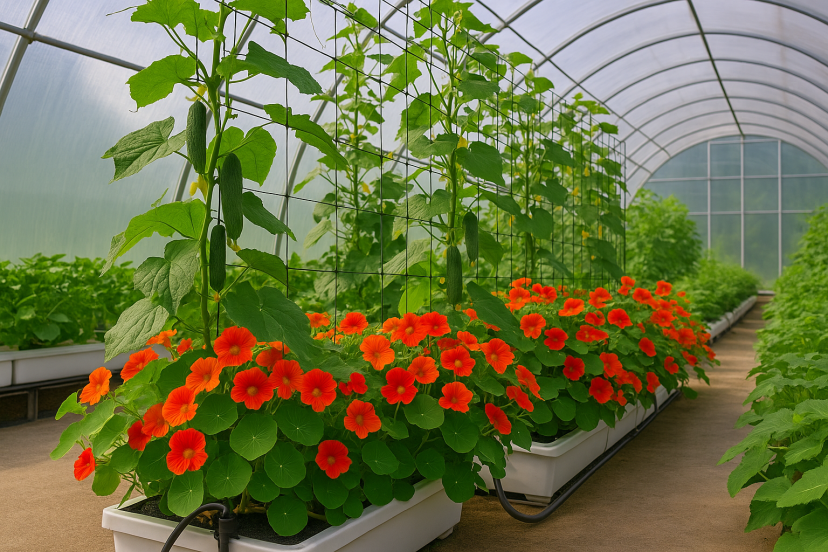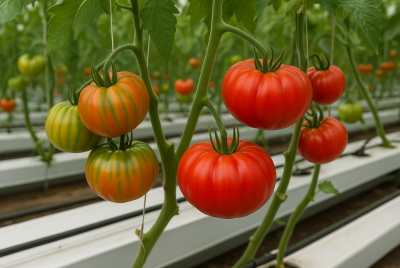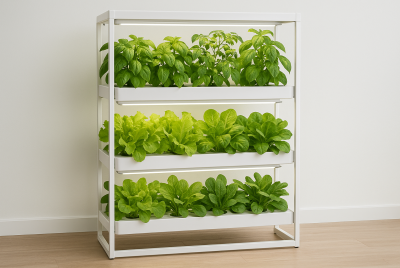5 Companion Planting Pairs That Thrive in Hydro Systems
We may earn a commission for purchases made using our links. Please see our disclosure for more details.
Companion planting has long been a go-to strategy for gardeners looking to boost plant health and productivity. In hydroponics, though, it’s often overlooked—leaving many growers to miss out on the powerful benefits of plant partnerships. This soil-free method isn’t just about isolated growth; when paired thoughtfully, certain crops can enhance each other’s flavor, deter pests naturally, and make better use of shared nutrients. That’s why in this article, we’re spotlighting five companion planting pairs that thrive specifically in hydro systems—perfect for anyone ready to level up their garden setup and let their plants work in harmony.
What Is Companion Planting?
Companion planting is the practice of growing plants that complement one another. Historically entrenched in conventional soil gardening—such as the well-known “Three Sisters” system of corn, beans, and squash—it is currently making waves in the hydroponics industry.
In hydro systems, companion planting remains effective. The advantages may be slightly different, but they’re just as significant:
- Efficient use of grow space
- Pest prevention without pesticides
- Natural chemical communication between plants
- Reduced need for synthetic additives
- Optimized nutrient distribution in shared reservoirs
The trick lies in understanding plant needs, growth cycles, and compatibility. Fortunately, many herbs and vegetables adapt beautifully to life without soil—and even better when planted with a buddy.
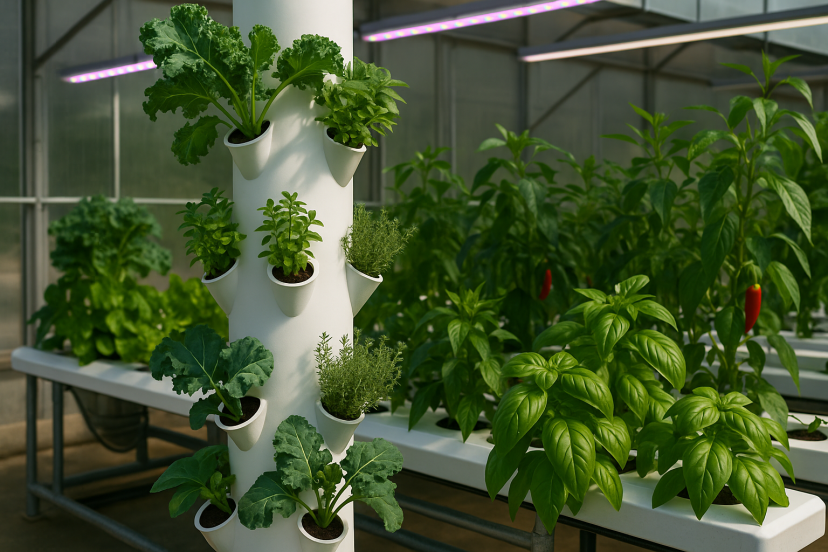
1. Lettuce and Basil
Lettuce and basil make excellent hydroponic companions, especially for beginners. These fast growers do well in shared systems and thrive in similar temperature and nutrient conditions. If you’re just getting started with herbs in hydro, check out this guide to growing hydroponic herbs for setup tips and top herb picks.
Why They Work Together
- Pest Control: Basil’s strong aroma helps repel pests like aphids and whiteflies.
- Healthier Roots: Basil has mild antimicrobial properties, which may keep the root zone cleaner.
- Flavor Boost: Anecdotal evidence suggests basil enhances the taste of nearby lettuce.
Best Setup
- Nutrient Film Technique (NFT)
- Kratky or Deep Water Culture (DWC)
2. Peppers and Oregano
Looking for a flavorful pairing with built-in pest protection? Oregano and peppers are a hydroponic dream team.
Why They Work Together
- Oregano acts as a natural insect repellent, warding off aphids and spider mites.
- Peppers provide shade and benefit from oregano’s aromatic protection.
- They share similar nutrient preferences and lighting needs.
Best Setup
- Vertical Tower Gardens (maximize space)
- Hybrid soil-hydro for peppers in open systems
3. Cucumbers and Nasturtiums
You might not think to grow flowers in your hydroponic setup—but nasturtiums are more than just pretty faces.
Why They Work Together
- Nasturtiums are a known trap crop, attracting pests away from cucumbers.
- Their edible flowers add color and value to your harvest.
- The vining nature of cucumbers and the trailing habit of nasturtiums keep them from competing.
Best Setup
- DWC with Trellis Support
- Greenhouse setups with plenty of light
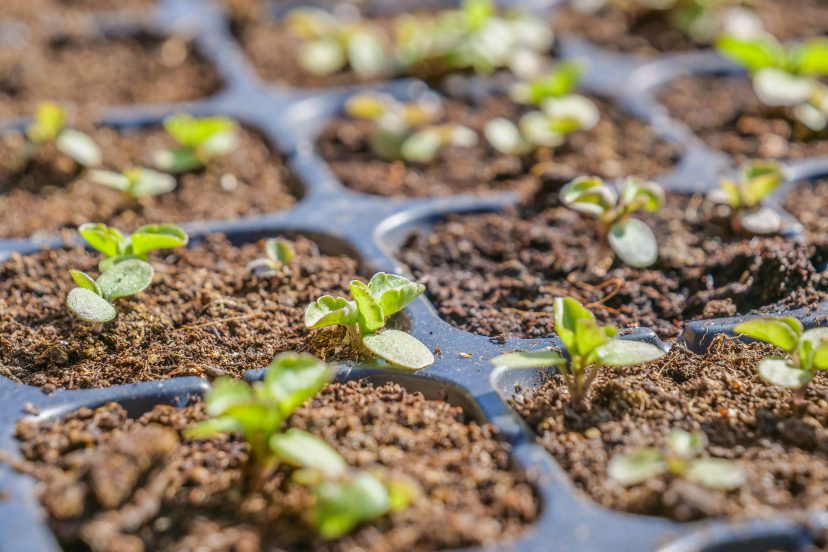
4. Green Onions and Spinach
This is a cold-weather-friendly combo ideal for raft or bubble bucket systems.
Why They Work Together
- Onions release sulfur compounds that deter pests and reduce fungal threats.
- Spinach thrives in slightly cooler, lower-light conditions, making it a good match for green onions.
- Both mature relatively fast, allowing for staggered harvesting.
Best Setup
- Raft systems or Aerated DWC setups
- Shared nutrient reservoirs with balanced pH
5. Kale and Thyme
Kale is a nutrient-dense staple crop in many hydro gardens. Pair it with thyme, and you’ll gain both flavor and functionality.
Why They Work Together
- Thyme repels whiteflies, cabbage moths, and fungal gnats.
- Kale enjoys a broad pH range, and thyme is incredibly adaptive.
- The low-growing thyme doesn’t compete for light or space.
Best Setup
- Ebb and Flow Systems
- NFT for tighter vertical gardens
Key Scientific Research Supporting Hydroponic Companion Planting
A notable experiment documented on ResearchGate investigated the influence of companion plants on lettuce growth in hydroponic/aquaponic systems, showing that interplanting lettuce with herbs like spearmint and arugula significantly increased yield and altered the root‑zone microbial community—highlighting how compatible plants can enhance nutrient uptake and disease resistance even in water‑based systems.
Similarly, a comprehensive review published in PMC underscores how modern hydroponic techniques dramatically reduce water use while improving resource efficiency and environmental sustainability. It discusses how tightly controlled systems support plant health and enable strategies—such as companion planting—to flourish under optimized conditions.
Taken together, these well‑recognized studies reinforce the article’s approach: pairing compatible herbs and vegetables—like lettuce with basil, or kale with thyme—in hydro systems can deliver measurable benefits in yield, pest resistance, and resource use.
Tools to Get You Growing
A successful hydro garden starts with the right equipment. Here are top-rated tools and kits to help you launch your own companion planting adventure:
| Product | Use Case | Link |
| Hydroponic Grow Light Kit | Year-round indoor lighting | Buy on Amazon |
| Vertical Tower Garden | Great for small spaces | Buy on Amazon |
| Organic Seeds (Herbs + Veggies) | High germination rate | Buy on Amazon |
| DWC Hydroponics Kit | Ideal for greens & herbs | Buy on Amazon |
| Trellis Netting | For vining plants like cucumbers | Buy on Amazon |
Conclusion
Companion planting is more than a traditional gardening hack—it’s a hydroponic strategy that improves outcomes across the board. By choosing plant pairs that support each other’s needs and growth habits, you can build a system that’s more resilient, productive, and even tastier. If you’re optimizing your home grow setup, don’t forget to explore other gear like the perfect 3D printer table for organizing your equipment and grow accessories. Start with one of the pairings above, experiment, and observe the results. You might be surprised how much more your garden gives back when plants work as a team.
FAQs
1. Can I mix any plants in hydroponics?
Not quite. Plants should share similar pH ranges, light intensity preferences, and nutrient needs. Mismatched pairs can lead to stunted growth or nutrient lockout.
2. Does companion planting work indoors too?
Yes! Indoor hydroponics is ideal for companion planting. With controlled lighting and airflow, plants thrive without soil-based pests.
3. Do herbs grow well in hydro systems?
Absolutely. Basil, thyme, oregano, mint, and parsley are all hydroponic-friendly and offer natural pest control benefits.
4. How do I maintain balance in a mixed plant system?
Monitor pH and EC levels regularly, prune plants to control growth, and harvest on schedule to avoid overcrowding.
5. What’s the easiest pairing to try first?
Lettuce and basil are hands-down the most beginner-friendly combo. They’re fast-growing, low-maintenance, and offer delicious results.

